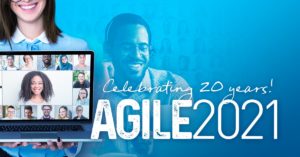“Move fast and break things.” — Mark Zuckerberg
He made that quote famous years ago, and it lit a fire under many in the sect of software I work in. Mobile development is no longer a hobby for companies today, and in that world speed is the key. If you can’t innovate and change fast enough, you’ll get left in the dust. Which is why we embrace the principle of “welcoming changing requirements, even late in development.” You could say we have laid out the welcome mat and left the door unlocked for that one. It’s allowed the company to grow immensely, and partnered with our parent company Ogilvy we have accomplished some amazing things.
It’s also caused some challenges for our teams internally, and forced us to ask some tough questions. Teams felt the whiplash of this pace, and our clients started finding the loose nature they signed up for to be a bit of a burden. Change has a cost, and we weren’t taking the time to understand it before the bill came due.
I would like to take everyone through some of my learnings as the agile coach at Bottle Rocket over the last 3 years. Regardless of the kind of change our companies need — whether they be on individual teams or organizationally — there are ways we can welcome change in a better way. Some of the topics I’ll cover are:
• Measuring change: How value-stream mapping gave us the right kind of information to improve how we work.
• Embracing simplicity: How we embraced the right kind of lean principles as a result.
• Understanding swarming better: You can’t simply throw people at the problem.
• Knowing what to do with the word “scope”: Expectations are everything with requirements and time tables.
• Working hand-in-hand with business: Don’t assume outside stakeholders understand what you are doing.
• Seeing dependencies better: Do you really know what it takes to begin your next feature?
By no means are we a finished product, but I hope you’ll join me in seeing how we are starting to work smarter instead of harder.



